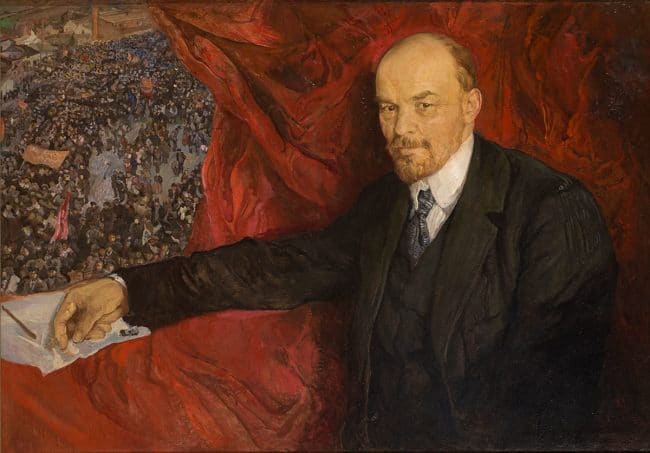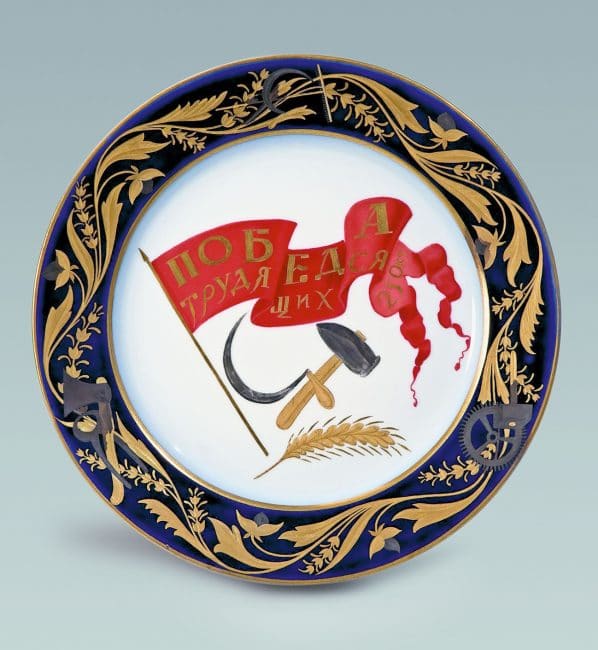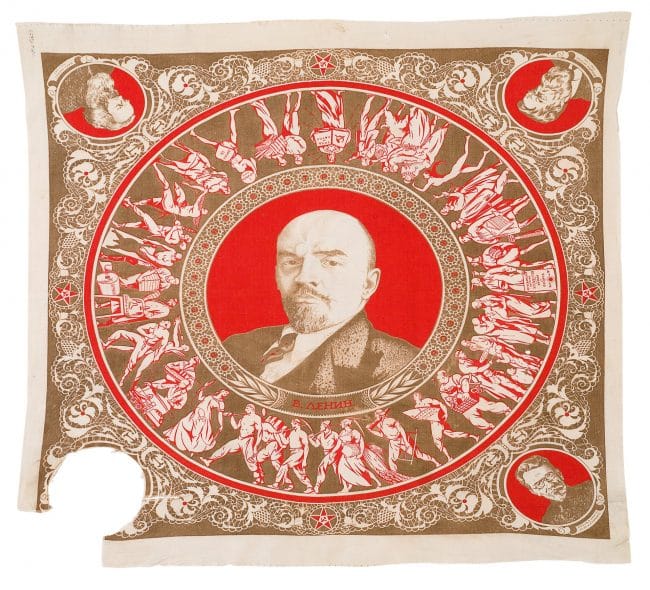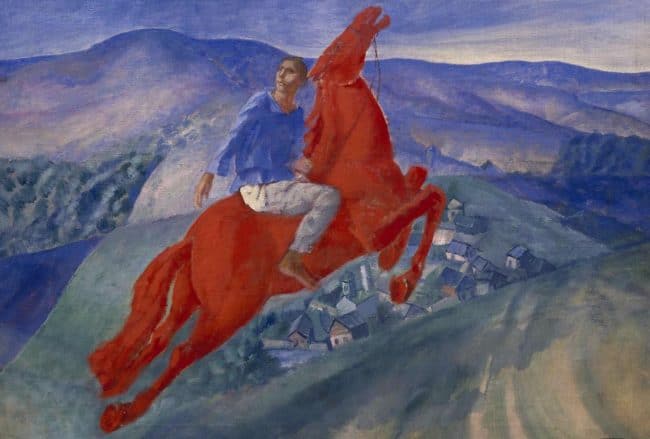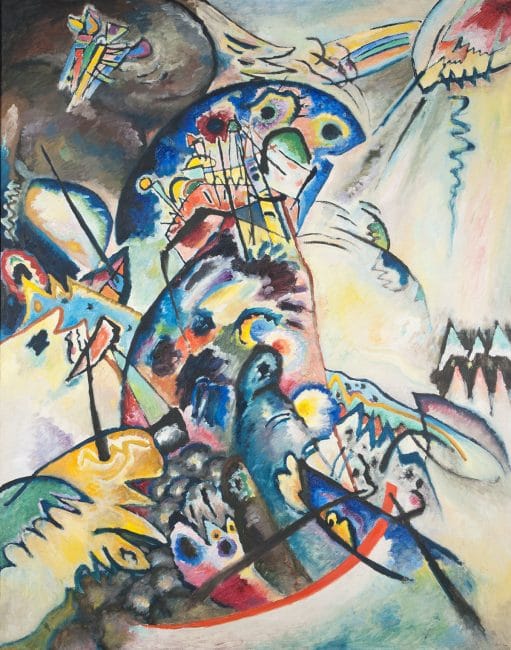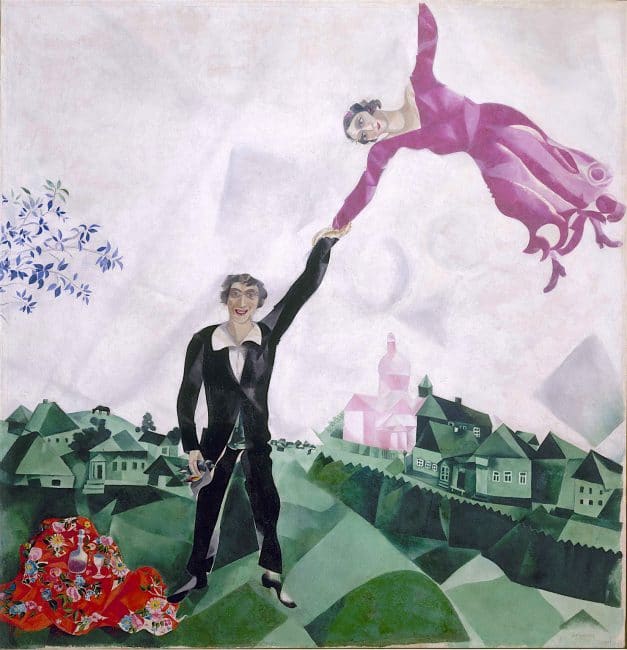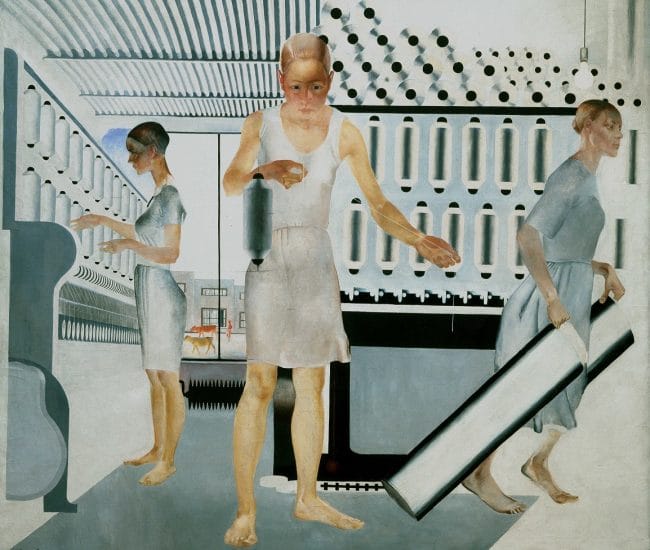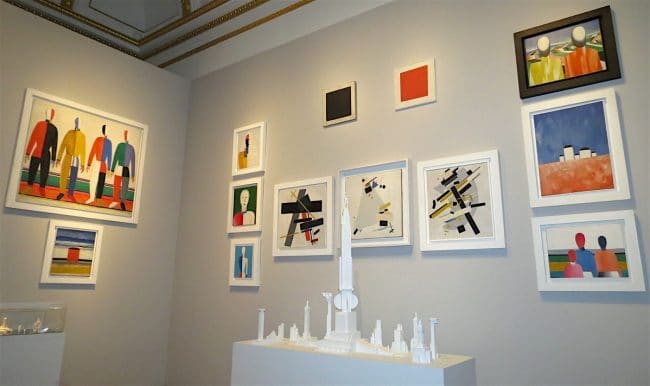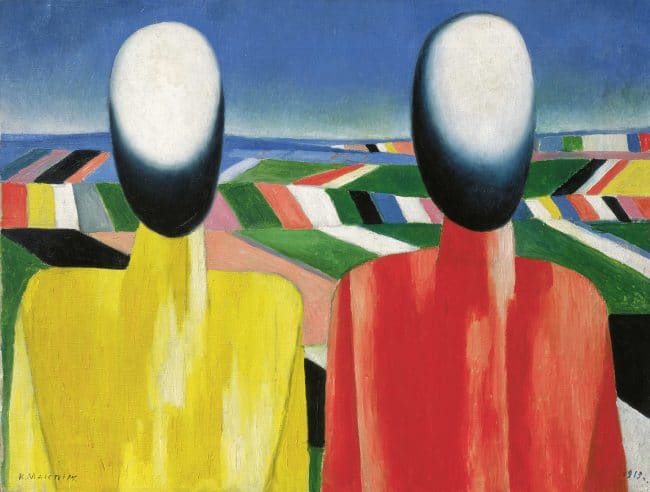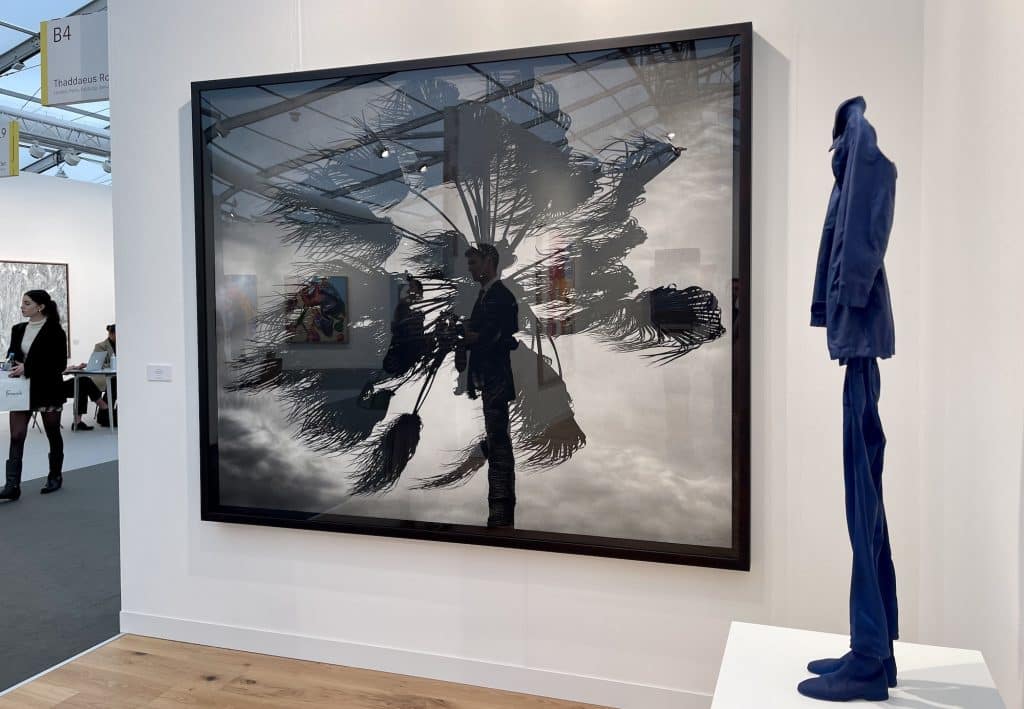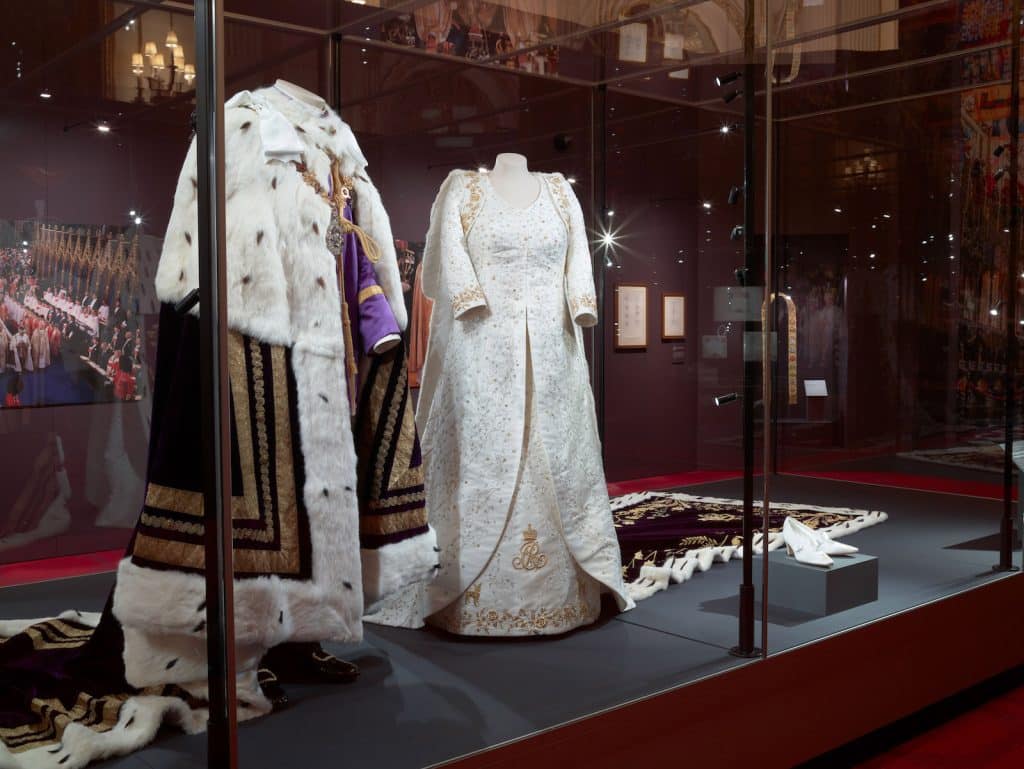With a frequently expressed sentiment that that we are currently living in troubled times it is interesting to reflect with a visit to Revolution, Russian Art 1917-1942. This presents the story of a truly turbulent era when Russians experienced everything from unbridled optimism and euphoria to death and despair.
The exhibition looks at the at the role of art through this remarkable period following on the Russian Revolution – a time of war, political upheaval, repression and famine as well as more positive emotions that came with liberation and feelings of freedom.
It is not just paintings that tells this story, infact far from it – this is a broad ranging ‘layered’ exhibition in which we see for example textiles, photography, film (documentary and newsreel), plus ceramics, posters and even an apartment-sized installation. Each strand has its wonders to admire – perhaps a piece of film by Sergei Eisenstein or a ceramic cup by Lyudmila Protopopova.
The RA has taken for its starting point an exhibition, held in 1932 at the State museum in Leningrad, that presented art from the first fifteen years of the revolution. It is a however a formidable task to weave together the story of the art of this period though all its divergent strands.
There inevitably is the story of the party, told via its propaganda – paintings, posters and film. At the same time there is the history of the Russian people, often the peasants – by turns perhaps euphoric, coerced, desperate and starving told via their images and products.
We also see how the avant grade artists and movements initially blossomed, embracing the vision of change, before widespread disillusion as authorities embraced Soviet Realism as a preferred style.
The exhibition is roughly chronological whilst at the same time creating broad thematic sections to reflect on the prevailing issues. For example we begin with Salute The Leader with Bolshevik propaganda and Stalins rise to power. Man & Machine looks at the proletariat working heroes, Brave New World sets the scene for the new cultural world, whilst Fate of the Peasants reflects on the terrible fate of the rural population.
There are stunning individual works like Marc Chagall’s Promenade holding his wife like a floating balloon, Wassily Kandinsky’s groundbreaking abstract Blue Crest, Alexander Deineka’s remarkable Textile Workers (above) and Boris Mikhailovich Kustodiev’s propagandist Bolshevik. Also within this scheme we find some key figures are highlighted: El Lissitsky’s idealised workers apartment is recreated in an expansive, but not particularly revealing, installation. Vladimir Malevich gets a whole gallery with over thirty works stunningly presented in exact reconstruction of its 1932 Leningrad hang (below) as does Kuzma Petrov-Bodkin – undeservedly lesser known, in the west at least.
A few of the individual highlights alone make the exhibition special but add the facts that many of the artists are little known in the west and that significant numbers of items are being seen outside Russia for the first time still makes this show absolutely essential viewing.
The detailed story of this momentous period is cluttered and not very clearly presented. There is the suspicion with their ‘multi-layered’ (read overly complex) approach they bit off more than they could chew. Nevertheless, take your time, absorb the history, admire the works and marvel at the creative spirit of the Russian people.
Revolution, Russian Art 1917-1942 runs until 17 April 2017
For more information visit www.royalacademy.org.uk




